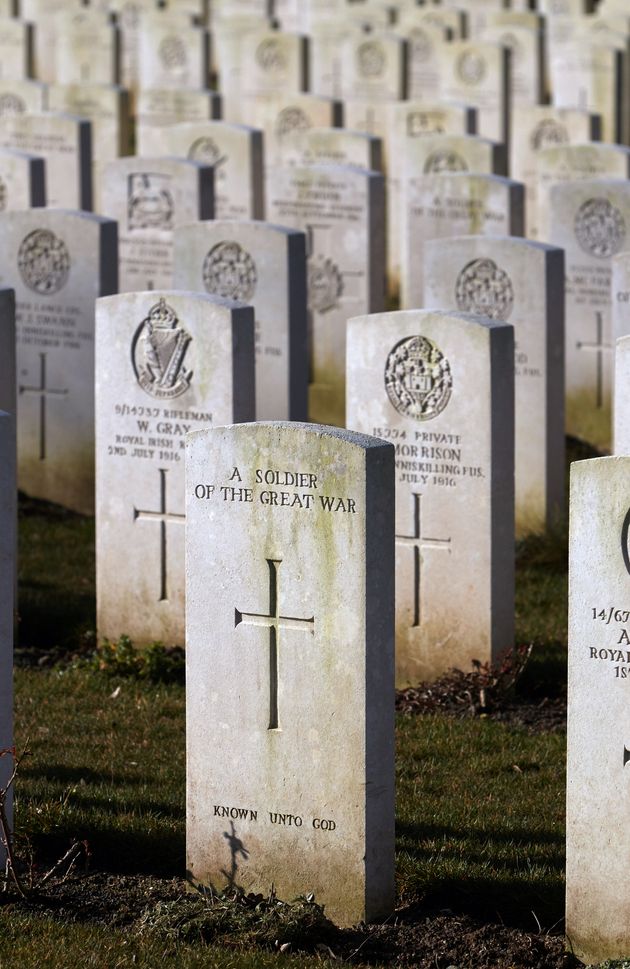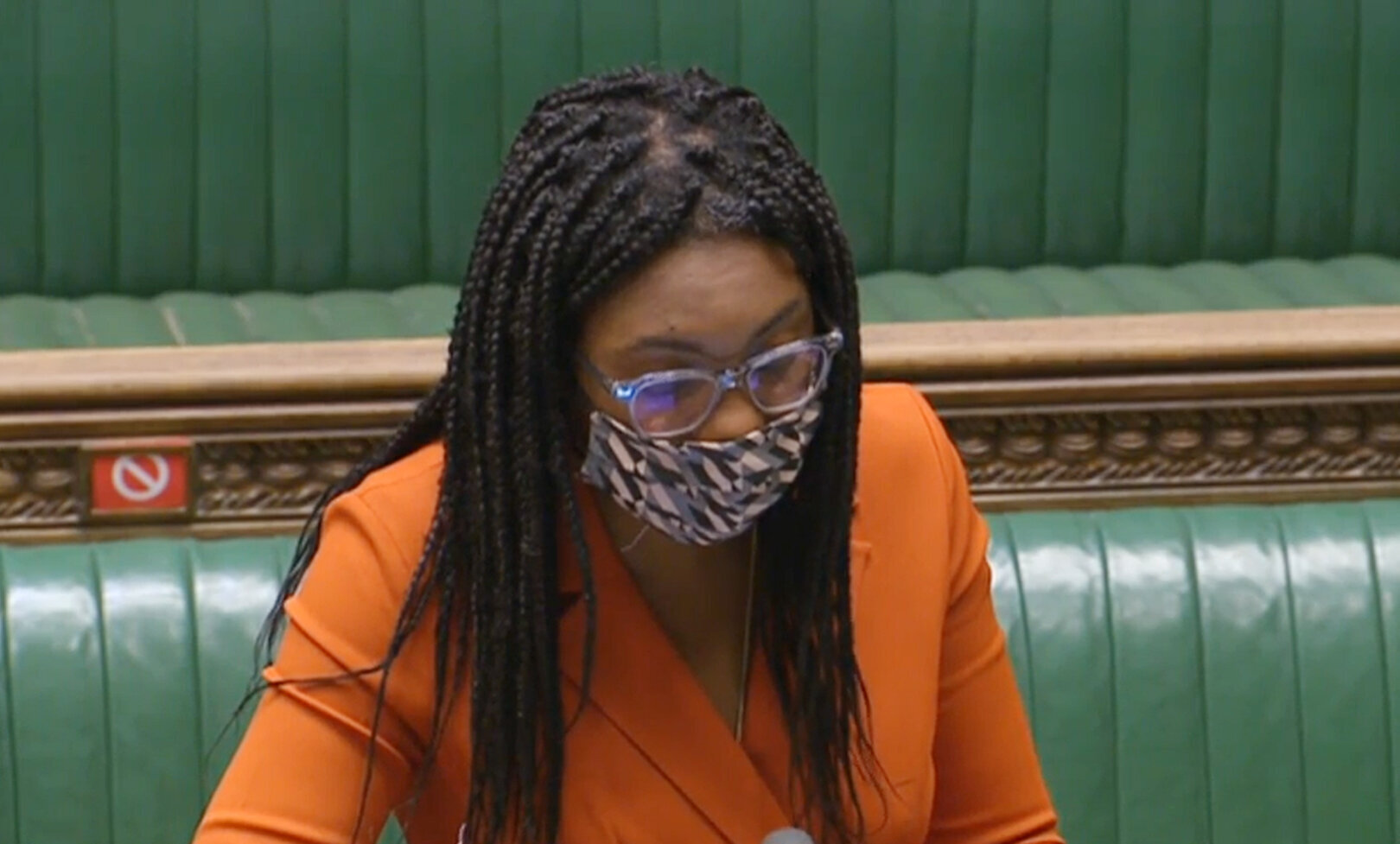“Pervasive racism” underpinned a failure to properly commemorate potentially hundreds of thousands of predominantly Black and Asian service personnel who died fighting for the British Empire, an investigation has found.
The Commonwealth War Graves Commission (CWGC) apologised after its investigation found those individuals were not formally remembered in the same way as their white comrades.
Defence secretary Ben Wallace on Thursday morning told the Commons: “The number of casualties commemorated unequally, the number commemorated without names and the number otherwise entirely unaccounted for is not excusable.” He accepted that “prejudice” had played a part.
The investigation discovered at least 116,000 predominantly African and Middle Eastern First World War casualties “were not commemorated by name or possibly not commemorated at all”.

The figure could be as high as 350,000, according to the report obtained by the PA news agency after it was first reported by the Guardian.
Most of the men were commemorated by memorials that did not carry their names.
When war broke out in 1914, King George V called for “men of every class, creed and colour” to join the fight. What was then the British West Indies is thought to have sent 16,000 soldiers to join the English forces, plus some 4,500 volunteers, who arrived in special contingents.
In 1915, the British West Indies Regiment (BWIR) was formed, comprising two thirds of its men from Jamaica and the rest hailing from the Bahamas to then British Guiana.
But Caribbean soldiers were not permitted to fight as equals against their white compatriots, with most serving for lower pay in the Labour Corps, according to the BBC.
One who was commemorated however was Walter Tull, who was a footballer and the first Black Army officer to command troops in a regular unit.
He died aged 29 while leading an attack on the Western Front during the second Battle of the Somme on March 25, 1918.
This #blackhistorymonth we remember Black personnel who paved the way. Walter Tull is known for being the first black @BritishArmy Officer. He joined the Footballer’s Battalion in the First World War and lost his life heroically leading an attack across No Man’s Land in 1918. pic.twitter.com/VdiyWvdM8W
— Ministry of Defence 🇬🇧 (@DefenceHQ) October 11, 2020
Tull served as a second lieutenant, leading men into battle at a time when the Army forbade a person of non-European descent becoming an officer.
As well as being one of the most celebrated Black British soldiers of the Great War, Tull was also one of the first Black professional football players in England, playing for Tottenham Hotspur while overcoming racial discrimination.
The investigation also estimated that between 45,000 and 54,000 Asian and African casualties were “commemorated unequally”.
Some were commemorated collectively on memorials, unlike those in Europe, and others, who were missing, were only recorded in registers rather than in stone.
In 2018 a war memorial featuring a Sikh soldier to honour the many from the Indian subcontinent who fought in both world wars was unveiled in Smethwick, Birmingham.
The special committee behind the investigation was established by the CWGC in 2019 after a critical documentary on the issue, titled Unremembered and presented by Labour MP David Lammy.
Originally named the Imperial War Graves Commission, it was founded in 1917 to commemorate those who died in the war.

The investigation found that the failure to properly commemorate the individuals was “influenced by a scarcity of information, errors inherited from other organisations and the opinions of colonial administrators”.
“Underpinning all these decisions, however, were the entrenched prejudices, preconceptions and pervasive racism of contemporary imperial attitudes,” it added.
One example given is based on communications in 1923 between F.G. Guggisberg, the governor of the Gold Coast colony, now Ghana, and Arthur Browne, from the commission.
At a meeting in London, it was said that the governor said “the average native of the Gold Coast would not understand or appreciate a headstone” as he argued for collective memorials.
A response from Arthur Browne showed “what he may have considered foresight, but one that was explicitly framed by contemporary racial prejudice”, according to the report.
“In perhaps two or three hundred years’ time, when the native population had reached a higher stage of civilisation, they might then be glad to see that headstones had been erected on the native graves and that the native soldiers had received precisely the same treatment as their white comrades,” he said.
In its response to the report, the CWGC says it “acknowledges that the Commission failed to fully carry out its responsibilities at the time and accepts the findings and failings identified in this report and we apologise unreservedly for them”.
In a statement CWGC director general Claire Horton said: “The events of a century ago were wrong then and are wrong now.
“We recognise the wrongs of the past and are deeply sorry and will be acting immediately to correct them.”
Lammy, the shadow justice secretary, said: “No apology can ever make up for the indignity suffered by the unremembered.
“However, this apology does offer the opportunity for us as a nation to work through this ugly part of our history – and properly pay our respects to every soldier who has sacrificed their life for us.”


